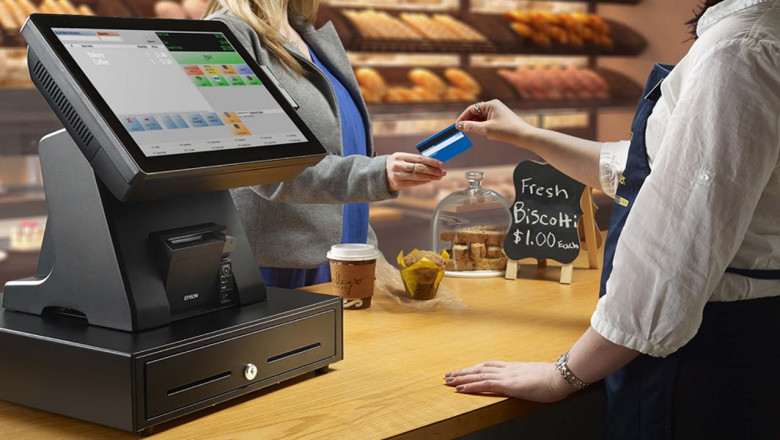views
The Point-of-Sale (POS) machine market competition analysis underscores an intensely competitive landscape fueled by rapid technological advancements, changing customer expectations, and evolving retail environments. As businesses shift toward digital commerce and cashless transactions, POS systems have become central to operations in retail, hospitality, healthcare, and transportation. This growing reliance on POS technology has created a thriving market, attracting established tech giants, niche players, and agile startups all vying for market share.
At the forefront are major global players such as Square (now Block Inc.), Verifone, Ingenico (Worldline), Clover (Fiserv), and Lightspeed, each bringing distinct strengths to the table. These companies have built strong brand reputations, extensive distribution networks, and a global customer base, allowing them to dominate the high-volume segments of the market.
Square, for instance, has carved out a strong presence in small and medium businesses (SMBs) through its user-friendly, cloud-based POS solutions. Its mobile-first design, bundled payment processing, and free-to-start pricing model have made it a favorite among small retailers, cafes, and freelancers. With continuous integration of features such as payroll, invoicing, and inventory, Square has transformed into a holistic business management ecosystem, offering far more than traditional POS functionality.
Verifone and Ingenico are long-time leaders in payment hardware, catering largely to enterprise customers and financial institutions. Their strength lies in high-volume retail, banks, and transportation sectors where security, compliance, and durability are critical. Their competitive edge also comes from robust support for EMV, NFC, contactless, and cross-border payment capabilities. However, they are increasingly challenged by more flexible, cloud-based, and software-centric players.
Clover, a product of Fiserv, is gaining traction in the U.S. and other markets through its customizable POS systems and app marketplace. Clover’s modular approach—offering various hardware configurations with an Android-based interface—appeals to both SMBs and multi-location businesses. Its seamless integration with backend accounting, inventory, and e-commerce platforms gives it a strong edge in meeting diverse operational needs.
Meanwhile, Lightspeed focuses heavily on specialty retail and hospitality, offering high-end, omnichannel POS systems with advanced analytics and eCommerce features. It has aggressively pursued growth through acquisitions of ShopKeep, Vend, and Upserve, expanding its geographical reach and product diversity. Lightspeed’s strength lies in delivering a premium, unified commerce experience—something increasingly important for modern retail environments.
Beyond these market leaders, a wave of emerging startups and regional competitors are intensifying the competition by addressing niche market needs with innovation and agility. Companies like Toast (focused on restaurants), Shopify POS (integrated with Shopify’s eCommerce), and Revel Systems (known for scalability and enterprise-grade features) are capturing substantial shares by targeting specific industries and offering vertical-focused solutions.
Toast, for example, has rapidly become a restaurant tech powerhouse by offering cloud-based POS systems tailored to the unique workflows of foodservice businesses. From tableside ordering and kitchen display systems to online ordering and delivery integration, Toast’s ecosystem is designed to increase restaurant efficiency. Its industry specialization allows it to outmaneuver general-purpose POS providers in the competitive food and beverage market.
Regional players across Asia-Pacific, Latin America, and Africa are also rising in prominence. Companies like PAX Technology (China), Pine Labs (India), and PagSeguro (Brazil) offer region-specific features such as multi-language interfaces, local tax compliance, and mobile connectivity in areas with limited infrastructure. These firms are successfully capturing underserved markets while preparing to scale globally.
The market competition is further shaped by several key strategic trends. First, M&A activity is accelerating as companies seek to expand their capabilities, geographic presence, or customer base. Acquisitions of software vendors by hardware-centric firms or vice versa are common, reflecting the demand for integrated solutions.
Second, product differentiation through innovation is crucial. Companies are racing to integrate AI, machine learning, and data analytics into POS platforms to provide value-added features like customer insights, predictive inventory management, and fraud detection. The ability to offer a POS system that goes beyond transactions and becomes a business intelligence tool is becoming a major differentiator.
Third, customization and scalability are key competitive factors. Businesses demand POS solutions that can adapt to their size, sector, and complexity. Modular POS systems that support plug-ins, industry-specific apps, and flexible hardware configurations are better positioned to win diverse clientele.
Fourth, customer service and support remain vital to customer retention and satisfaction. Players with strong after-sales support, training, and quick response mechanisms often maintain a loyal customer base. As POS systems are critical to day-to-day operations, downtime or technical failures can cause significant business losses—making reliability and support essential competitive advantages.
Finally, the transition to cloud-based and SaaS models is shifting competition from hardware pricing to long-term service relationships. This evolution favors companies that can provide seamless updates, remote troubleshooting, and continuous improvements—creating an ongoing revenue model rather than one-time hardware sales.
In conclusion, the Point-of-Sale (POS) machine market competition analysis highlights a rapidly evolving arena where innovation, specialization, and strategic positioning define success. As businesses increasingly prioritize smart, connected, and scalable POS systems, market leaders and challengers alike are investing in next-generation capabilities to stay ahead. The convergence of payment technology, software intelligence, and industry-tailored solutions continues to shape a competitive, diverse, and fast-growing global market.






















Comments
0 comment